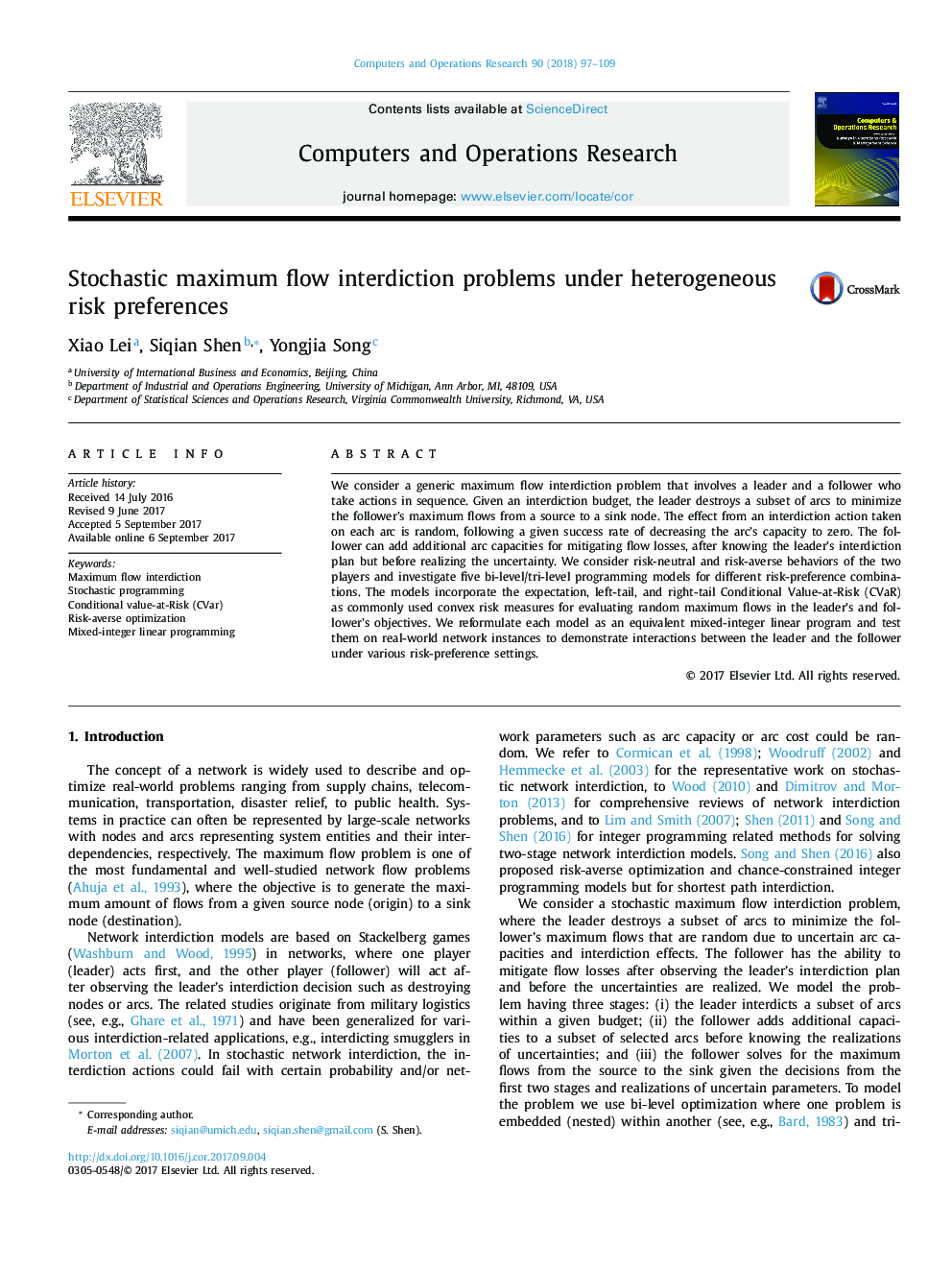| Article ID | Journal | Published Year | Pages | File Type |
|---|---|---|---|---|
| 4958865 | Computers & Operations Research | 2018 | 13 Pages |
Abstract
We consider a generic maximum flow interdiction problem that involves a leader and a follower who take actions in sequence. Given an interdiction budget, the leader destroys a subset of arcs to minimize the follower's maximum flows from a source to a sink node. The effect from an interdiction action taken on each arc is random, following a given success rate of decreasing the arc's capacity to zero. The follower can add additional arc capacities for mitigating flow losses, after knowing the leader's interdiction plan but before realizing the uncertainty. We consider risk-neutral and risk-averse behaviors of the two players and investigate five bi-level/tri-level programming models for different risk-preference combinations. The models incorporate the expectation, left-tail, and right-tail Conditional Value-at-Risk (CVaR) as commonly used convex risk measures for evaluating random maximum flows in the leader's and follower's objectives. We reformulate each model as an equivalent mixed-integer linear program and test them on real-world network instances to demonstrate interactions between the leader and the follower under various risk-preference settings.
Related Topics
Physical Sciences and Engineering
Computer Science
Computer Science (General)
Authors
Xiao Lei, Siqian Shen, Yongjia Song,
